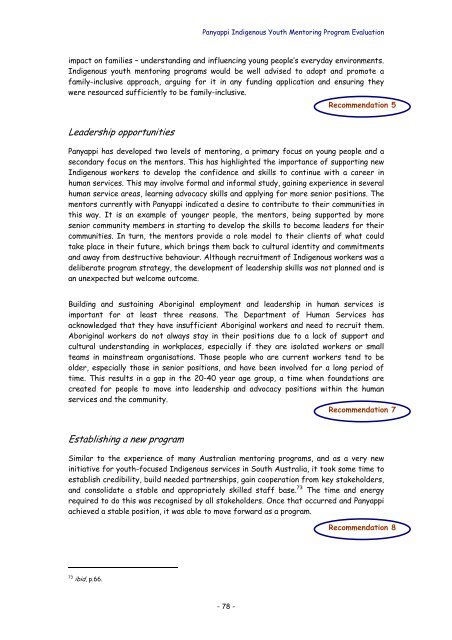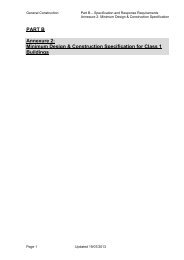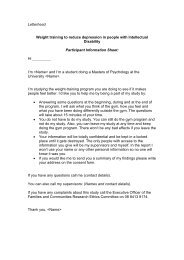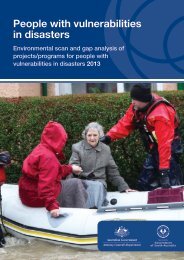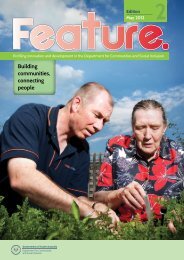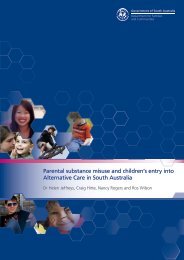Panyappi Indigenous Youth Mentoring Program Evaluation
Panyappi Indigenous Youth Mentoring Program Evaluation
Panyappi Indigenous Youth Mentoring Program Evaluation
You also want an ePaper? Increase the reach of your titles
YUMPU automatically turns print PDFs into web optimized ePapers that Google loves.
<strong>Panyappi</strong> <strong>Indigenous</strong> <strong>Youth</strong> <strong>Mentoring</strong> <strong>Program</strong> <strong>Evaluation</strong><br />
impact on families – understanding and influencing young people’s everyday environments.<br />
<strong>Indigenous</strong> youth mentoring programs would be well advised to adopt and promote a<br />
family-inclusive approach, arguing for it in any funding application and ensuring they<br />
were resourced sufficiently to be family-inclusive.<br />
Leadership opportunities<br />
Recommendation 5<br />
<strong>Panyappi</strong> has developed two levels of mentoring, a primary focus on young people and a<br />
secondary focus on the mentors. This has highlighted the importance of supporting new<br />
<strong>Indigenous</strong> workers to develop the confidence and skills to continue with a career in<br />
human services. This may involve formal and informal study, gaining experience in several<br />
human service areas, learning advocacy skills and applying for more senior positions. The<br />
mentors currently with <strong>Panyappi</strong> indicated a desire to contribute to their communities in<br />
this way. It is an example of younger people, the mentors, being supported by more<br />
senior community members in starting to develop the skills to become leaders for their<br />
communities. In turn, the mentors provide a role model to their clients of what could<br />
take place in their future, which brings them back to cultural identity and commitments<br />
and away from destructive behaviour. Although recruitment of <strong>Indigenous</strong> workers was a<br />
deliberate program strategy, the development of leadership skills was not planned and is<br />
an unexpected but welcome outcome.<br />
Building and sustaining Aboriginal employment and leadership in human services is<br />
important for at least three reasons. The Department of Human Services has<br />
acknowledged that they have insufficient Aboriginal workers and need to recruit them.<br />
Aboriginal workers do not always stay in their positions due to a lack of support and<br />
cultural understanding in workplaces, especially if they are isolated workers or small<br />
teams in mainstream organisations. Those people who are current workers tend to be<br />
older, especially those in senior positions, and have been involved for a long period of<br />
time. This results in a gap in the 20-40 year age group, a time when foundations are<br />
created for people to move into leadership and advocacy positions within the human<br />
services and the community.<br />
Recommendation 7<br />
Establishing a new program<br />
Similar to the experience of many Australian mentoring programs, and as a very new<br />
initiative for youth-focused <strong>Indigenous</strong> services in South Australia, it took some time to<br />
establish credibility, build needed partnerships, gain cooperation from key stakeholders,<br />
and consolidate a stable and appropriately skilled staff base. 73 The time and energy<br />
required to do this was recognised by all stakeholders. Once that occurred and <strong>Panyappi</strong><br />
achieved a stable position, it was able to move forward as a program.<br />
73 ibid, p.66.<br />
- 78 -<br />
Recommendation 8


